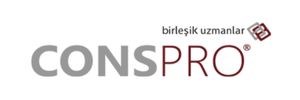


In today’s competitive and compliance-driven business environment, safeguarding financial systems against fraud and errors is critical. One of the essential control mechanisms to achieve this is Segregation of Duties (SOD). This practice ensures that no single individual is entrusted with multiple crucial tasks within a business process, minimizing the risk of internal fraud and errors.
Dynamics 365 Finance and Operations (D365FO) provides an integrated solution to help organizations assess and manage SOD risks effectively. By utilizing its security framework, role-based access controls, and analytical tools, businesses can proactively identify conflicts and implement corrective actions to ensure compliance with industry regulations such as SOX and COSO.
This article focuses on how D365FO can simplify the SOD analysis process, helping businesses stay secure and compliant with key industry standards.
In D365FO, SOD management revolves around the concept of duties, which are groups of related privileges that define what a user can do within the system. Here are the main components that support SOD within D365FO:
Security roles are the top-level entities in D365FO’s security framework. These roles group duties and privileges that are necessary for specific job functions. Examples include roles like Accounts Payable Manager or Inventory Clerk, which ensure that users only have access to features related to their tasks.
Roles are assigned to users, linking them to duties and privileges. Proper SOD management involves ensuring that no role encompasses conflicting duties.
D365FO includes a built-in framework for defining and enforcing SOD rules, which specify which combinations of duties are incompatible and should not be assigned to the same user. For example:
The list of these conflicts forms the SOD Framework or SOD Ruleset, which helps ensure that duties are assigned in a way that prevents internal fraud.
D365FO offers tools to detect SOD violations and help organizations resolve conflicts effectively. Administrators can use diagnostic tools to run analyses and identify potential violations, ensuring compliance with regulatory standards such as SOX.
To begin performing SOD risk analysis, the following components should be configured:
Security roles in D365FO group duties and privileges. Users are assigned specific roles, which link them to particular duties and privileges. The role assignments play a crucial role in the SOD analysis process.
To create a rule in D365FO that prevents a user from performing both the "Maintain Vendor Invoices" and "Approve Vendor Invoices" duties, follow these steps:
The rule is now created, and the system will alert administrators if a user is assigned conflicting duties.
Once the SOD rules are configured, the next step is running diagnostics to identify conflicts:
The options are:
ITACs (Information Technology Application Controls) are integral to addressing SOD conflicts in D365FO. These controls are used to document and implement mitigation actions for identified risks.
For instance:
Dynamics 365 Finance and Operations (D365FO) provides comprehensive tools to manage Segregation of Duties (SOD). By leveraging security roles, duties, privileges, and SOD rules, businesses can identify conflicts, enforce compliance with regulations, and ensure critical business processes remain secure.
D365FO’s integration with ITACs and workflows enables businesses to address conflicts and mitigate risks, providing a robust solution for maintaining the integrity of financial systems and safeguarding against fraud.
Source: https://dynamics365clouderp.blogspot.com/2024/11/performing-segregation-of-duties-sod.html